Key Takeaways:
- Two popular hearing aid styles are in-ear devices and behind-the-ear styles.
- Styles worn behind the ear are most popular (RIC hearing aids especially), but some choose an in-ear option.
- When considering the best style for you, consider comfort, sound quality, appearance, and technology.

If you're in the market for a hearing aid, you might feel like you're swimming in a sea of choices. There are many different types and styles of hearing aids, and it can be tough to decide which is right.
One of the first decisions you'll need to make is whether you prefer a hearing aid that sits behind the ear or inside the ear canal.
This guide will closely examine both styles and compare their pros and cons to help you make an informed decision.
Let's get started!
Prefer to watch?
See our full in-the-ear vs. behind-the-ear breakdown here. 👇
Let's start with a closer look at behind-the-ear hearing aids.
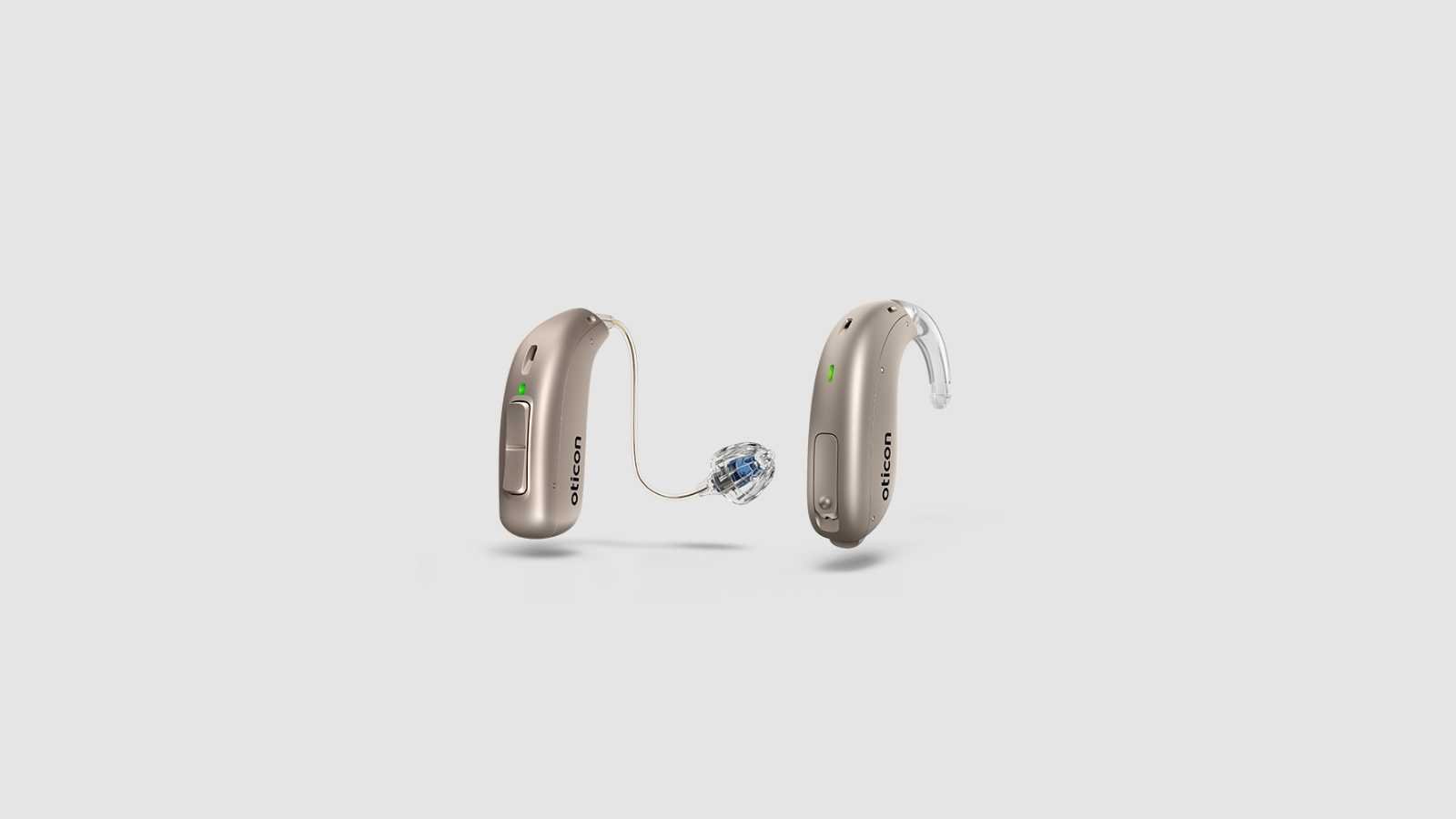
Around 80% of hearing aid wearers choose a style that sits behind their ear with a wire or tube that reaches into the ear canal. We'll talk about some of the reasons behind-the-ear styles are so popular in a moment.
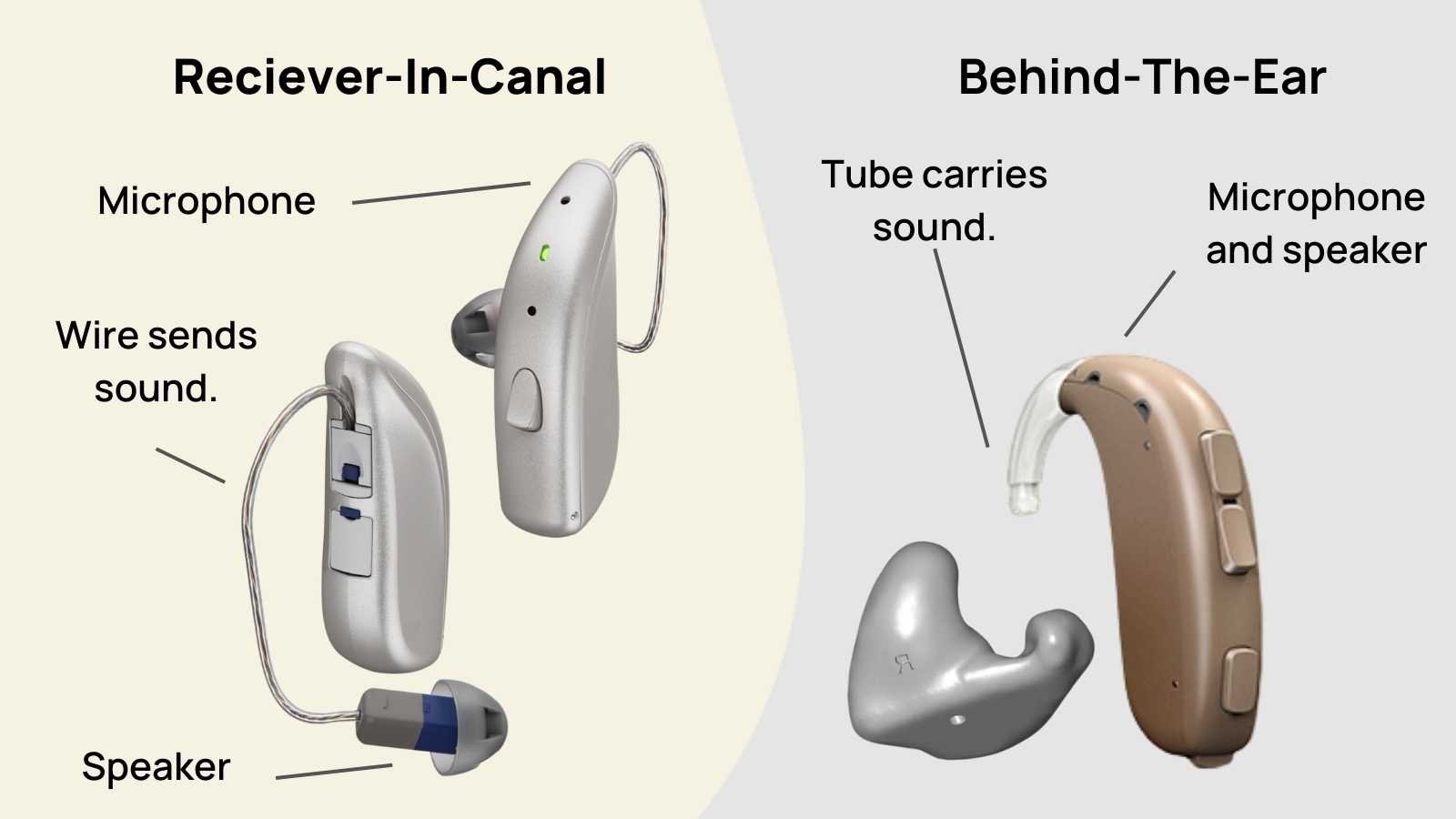
Behind-the-ear style hearing aids come in two forms called BTE and RIC hearing aids. In both styles, the body of the hearing aids sits behind the ear, but RIC (short for "receiver-in-canal") hearing aids place a speaker at the end of the wire. In contrast, BTE (short for "behind-the-ear") keeps the microphone on the body of the hearing aid to provide more power for those with severe or profound hearing loss.
Now let's look at in-the-ear hearing aids.
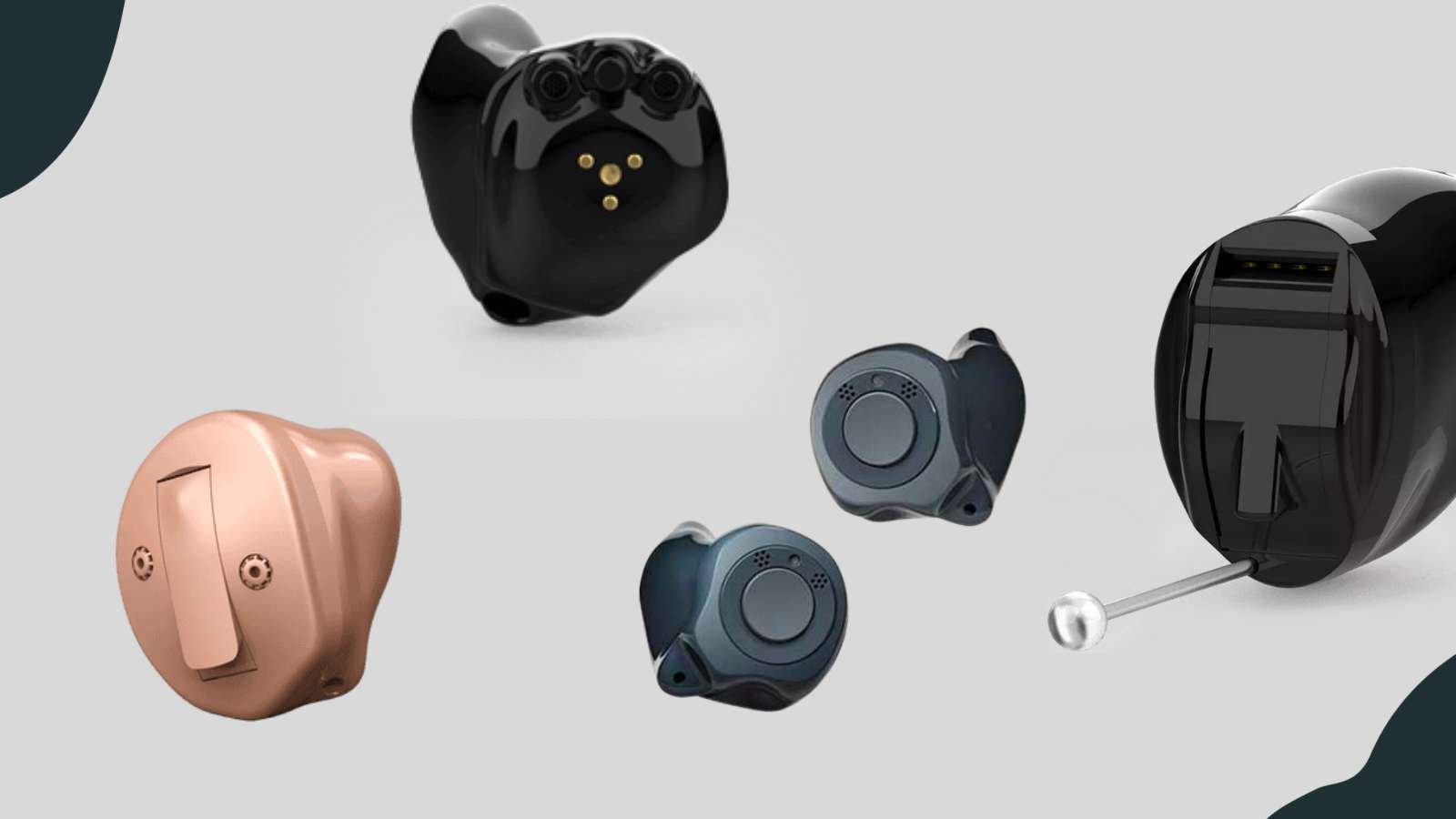
This hearing aid is a style worn in the ear and can range in size from almost filling the outer ear, called an ITE, to an invisible-in-the-canal hearing aid, called an IIC, that is practically visible in the ear. Here's a breakdown of the most common sizes among in-the-ear hearing aids.
- Invisible In The Canal (IIC)
- Completely In The Canal (CIC)
- In The Canal (ITC)
- In-The-Ear (ITE)
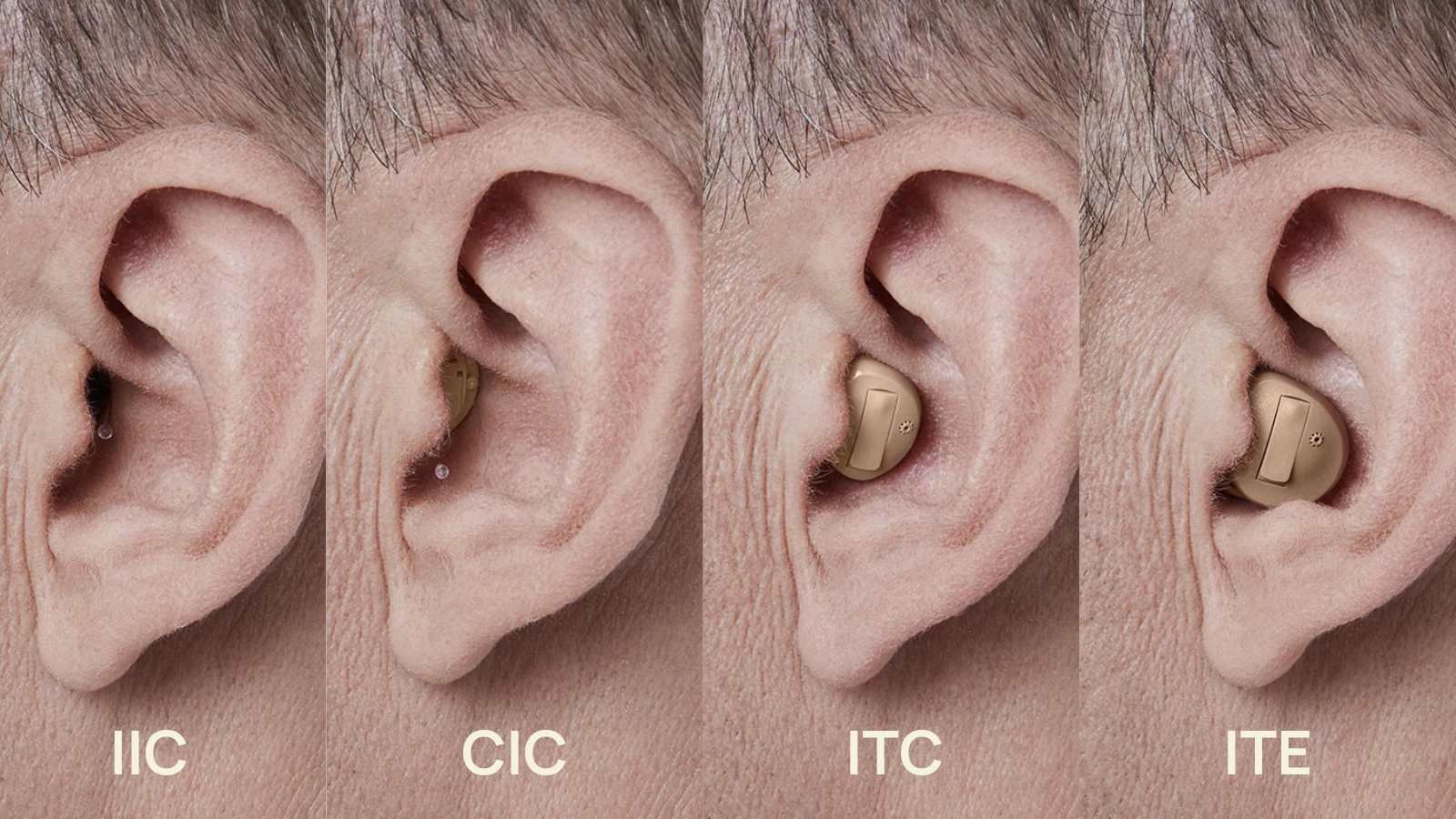
In-the-ear hearing aids most often include a custom mold.
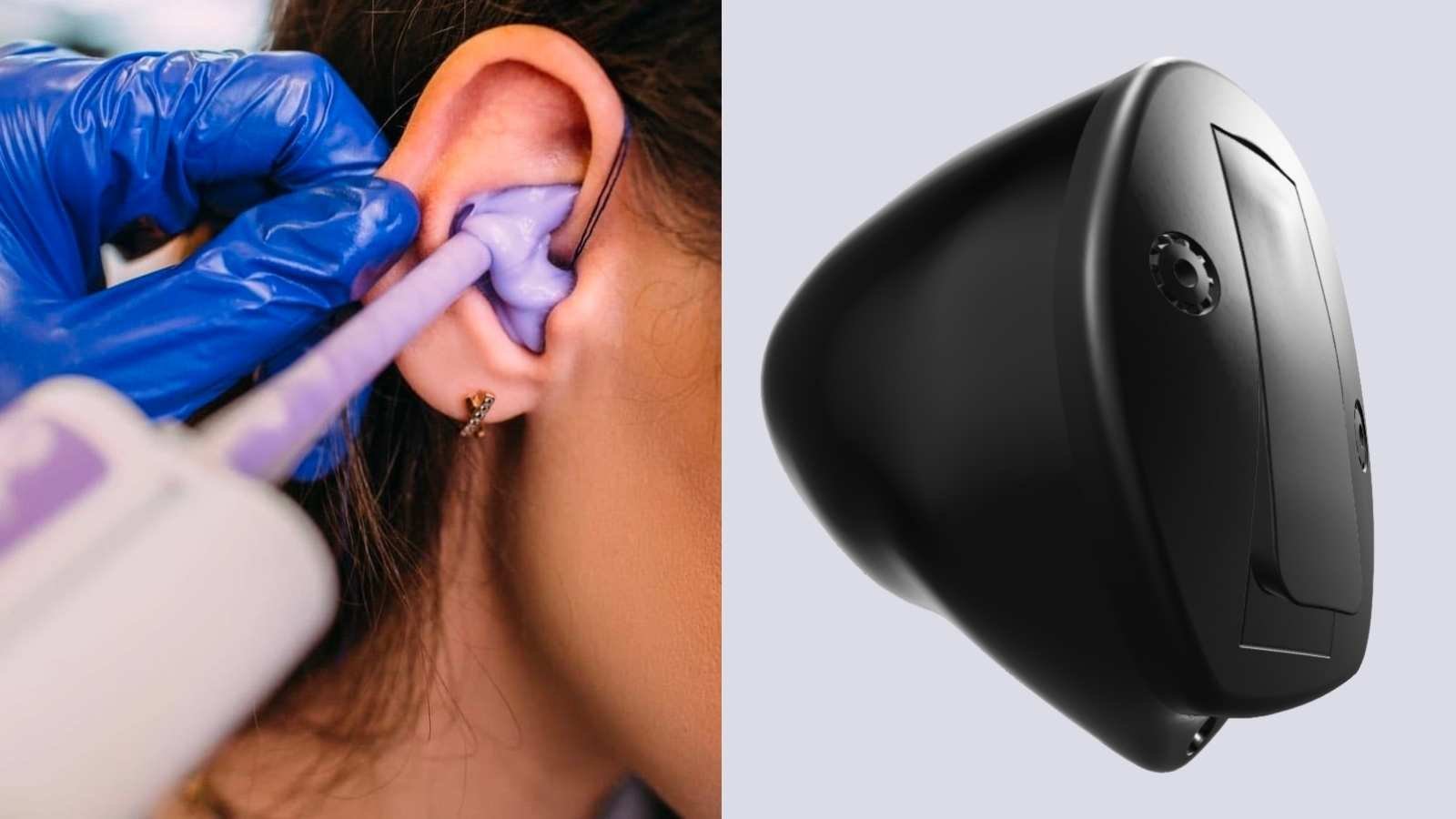
Most in-the-ear hearing aids are custom-molded to a hearing aid wearer's ears. The custom-mold process requires a visit to a local audiologist who will fill your ear canal with a silicone material that is then shipped to the manufacturer and used to shape a hearing aid device to match the intricacies of your ear.
A few in-the-ear brands come ready-to-wear.
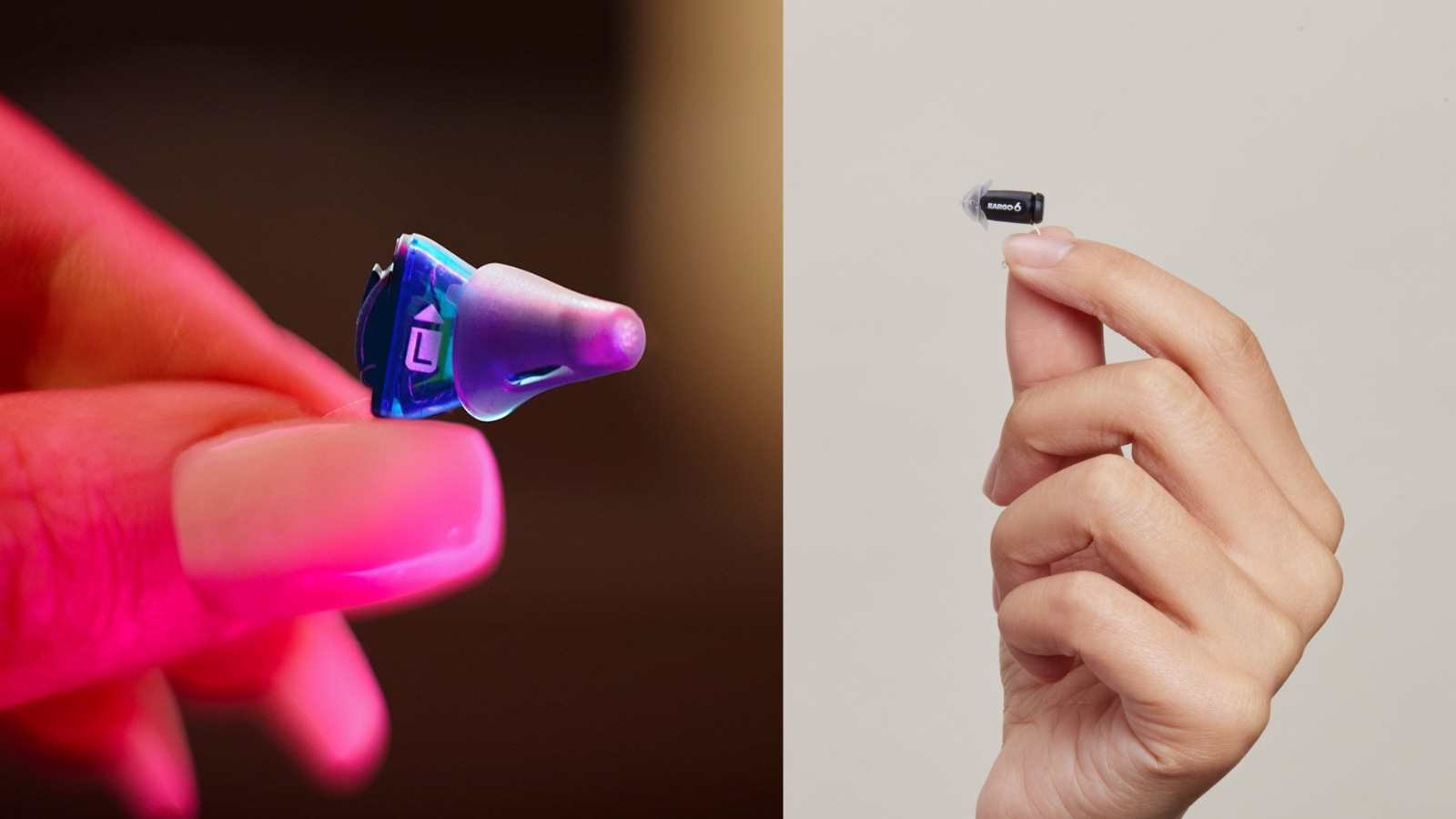
A few brands like Signia, Eargo, and Sony provide ready-to-wear in-the-ear devices with various tips to match your ear size. In general, ready-to-wear hearing aids are less expensive and less comfortable than their custom-molded counterparts.
Choosing Between In-The-Ear Vs. Behind-The-Ear Styles
There are a few deciding factors that you should consider as you choose a hearing aid style.
Comfort: For some, hearing aid style can impact the physical ease of all-day wear.
Sound quality: Behind-the-ear and in-the-ear styles come with their own unique sound.
Technology: Only some styles support popular features like Bluetooth, Telehealth, and rechargeability.
Appearance: Hearing aid aesthetics vary by style.
Comfort
Either style can be equally comfortable for most people. Custom-molded ITE aids fit snugly inside your ear canal and are shaped to fit your ear size and shape. For a small group of people, the hard acrylic material can be uncomfortable for those with bendy ear canals.
With time to adjust, most people become very comfortable and forget they are wearing their devices. Your audiologist can sometimes modify the device to help with comfort by reshaping or buffing the hearing aid shape if a specific part of the device is agitating your ear canal.
Behind-the-ear style hearing aids are typically lightweight and sit comfortably behind the ear. BTE-style hearing aids can include a tiny dome or a custom-molded depending on an individual's hearing loss. Learn more earmolds and domes here.
The variety of options means that nearly everyone will find a comfortable fit.
The one drawback is that behind-the-ear style hearing aids share space with glasses, masks, and oxygen tubes.
Bottom line:
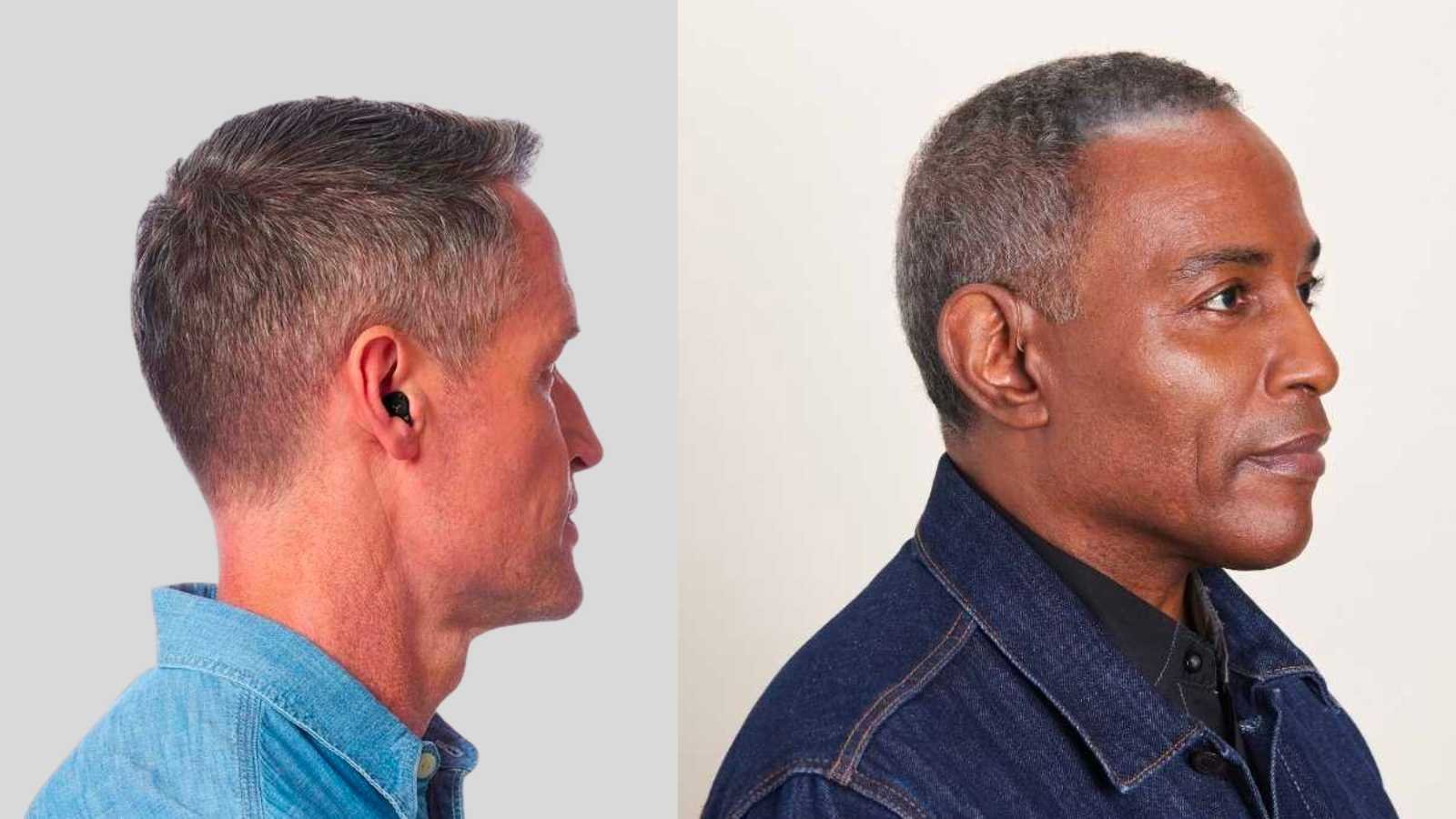
If you have bendy or sensitive ear canals, behind-the-ear styles are probably best for you. You might appreciate in-the-ear devices if you wear a mask regularly or use oxygen.
Sound quality
Most hearing aid manufacturers us the same underlying technology regardless of hearing aid style. But technology is not only factor in sound quality.
Behind-the-ear and in-the-ear hearing aids come with unique sound profiles based on how they sit inside the ear.
Custom hearing aids can fit mild to severe hearing loss. However, those with normal or mild low-frequency hearing loss will typically not like the sound quality of custom-molded hearing aids due to the occlusion effect. To understand the occlusion effect, plug your ears and try talking or chewing. The sound can't escape your ears and returns to the eardrum to create a boomy sound.
With time, the brain does adjust to this effect, but it can be frustrating.
The sound quality trade-off is worth the sacrifice for those determined to have a small hearing aid that sits inside the ear.
Behind-the-ear style hearing aids offer a wider variety of options and styles inside the ear. The possibilities range from open-fit domes that allow natural sound flow to custom-molded earpieces that fit the ear comfortably to provide enough volume for more severe hearing losses.
Bottom line:
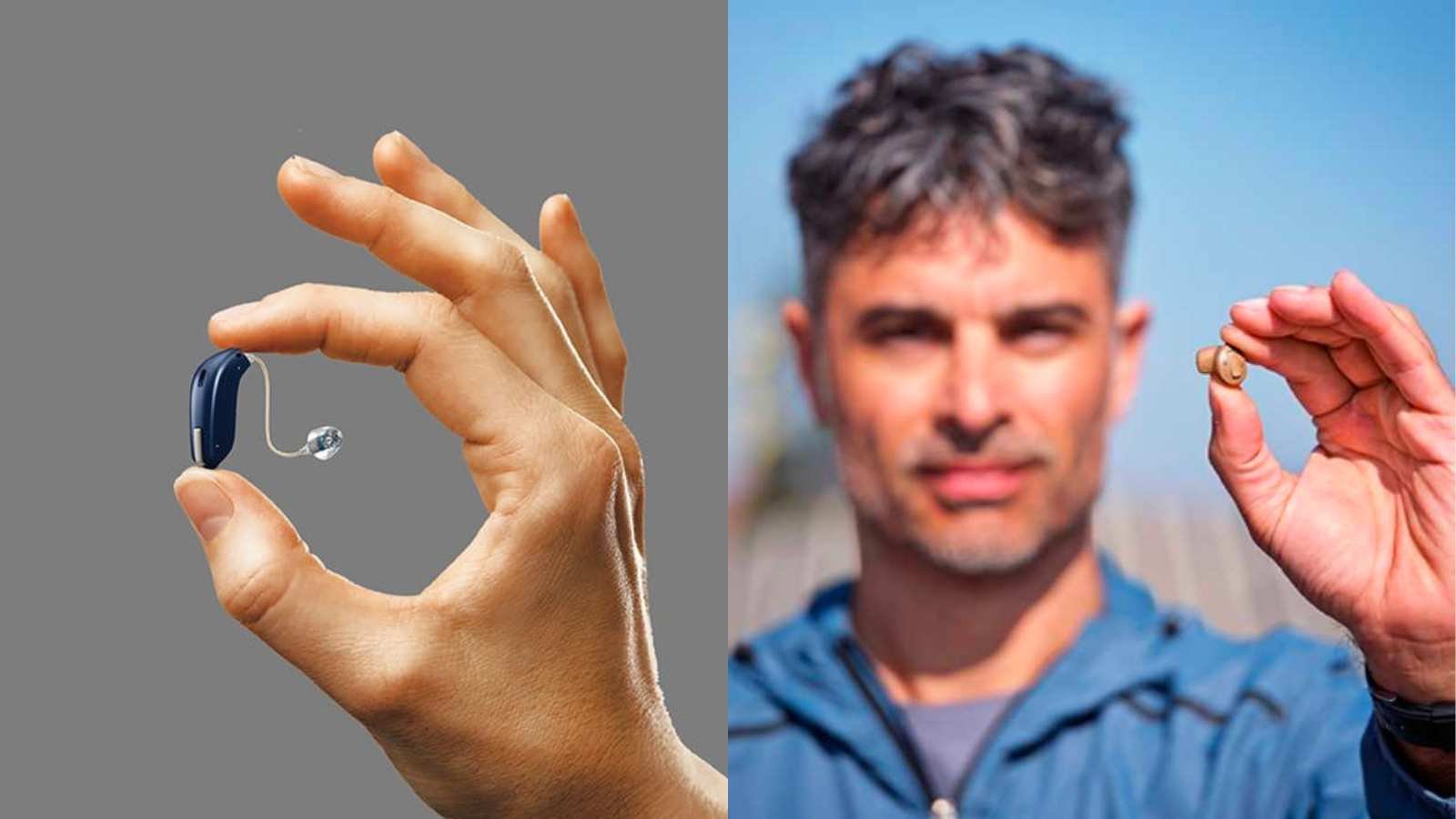
In-the-ear and behind-the-ear style hearing aids offer most of the same sound algorithms and processing power. They differ in how they sit in the ear, which can impact the overall sound experience. If you are a first-time hearing aid wearer, it's a safe bet to start with a behind-the-ear style for the easiest adjustment period and maximum flexibility.
Technology
Are you looking for Bluetooth or rechargeability options with your hearing aids? Maybe you want your audiologist to have programming control through Telehealth? Let's look at which style will provide what you need.
A behind-the-ear style hearing aid will have all the most up-to-date Bluetooth features and rechargeable hearing aid options. All new leading premium-level BTE and RIC hearing aids offer Bluetooth and Smartphone app connectivity. Some brands, like Phonak, also provide tap control features that allow answering phone calls without your phone. If Bluetooth and rechargeability are at the top of your list, a BTE hearing aid is a great option to meet your needs.
Some in-the-ear hearing aids do do offer Bluetooth and rechargeability options within their larger sizes. For example, the largest custom hearing aid (ITE) will feature Bluetooth connectivity, but a hearing aid smaller than an ITC will typically not.
Most premium behind-the-ear hearing aids now allow audiologists to log in and make remote adjustments without an office visit. This technology is available in certain in-the-ear models, but not all of them.
As for rechargeability, GN Resound, Signia, and Starkey are some hearing aid manufacturers currently making their larger in-the-ear technology rechargeable. However, smaller hearing aids, such as the IIC, will not come in rechargeable options.
In general, hearing aids that sit behind the ear get new technology first, with in-the-ear technology trailing a few years behind.
Bottom line:
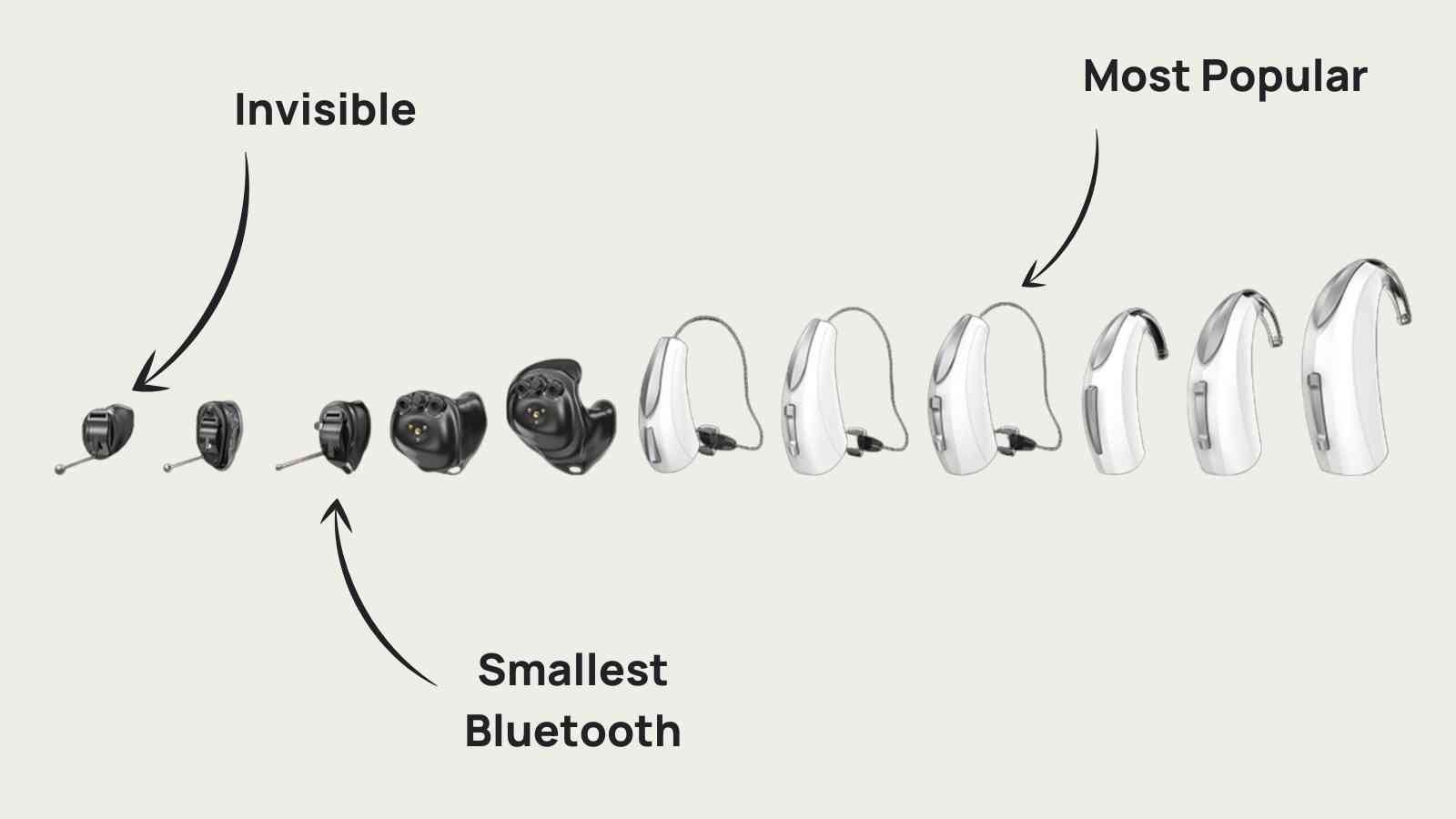
If you want all the latest technology, you'll want to go with a hearing aid that sits behind the ear.
Appearance
When it comes to appearance, each has its advantages. Many assume that hearing aids behind the ear are more visible, but nowadays, this style of hearing aid is smaller than ever. Let's look at how this technology appeared previously compared to today.
Many BTE aids come in modern colors and can even be customized to match your skin tone. The small wire is very low-profile and does not stand out. The piece behind the ear is also quite well hidden by hair. Most of the time, these hearing aids blend in without being noticed.
Custom hearing aids can range from totally invisible inside the ear canal to earbud size.
The exact size of the custom device will depend on your specific ear anatomy. For example, only some ear canals are suitable for the smallest IIC hearing aid, while others are not small enough to house all of the components.
Bottom line:
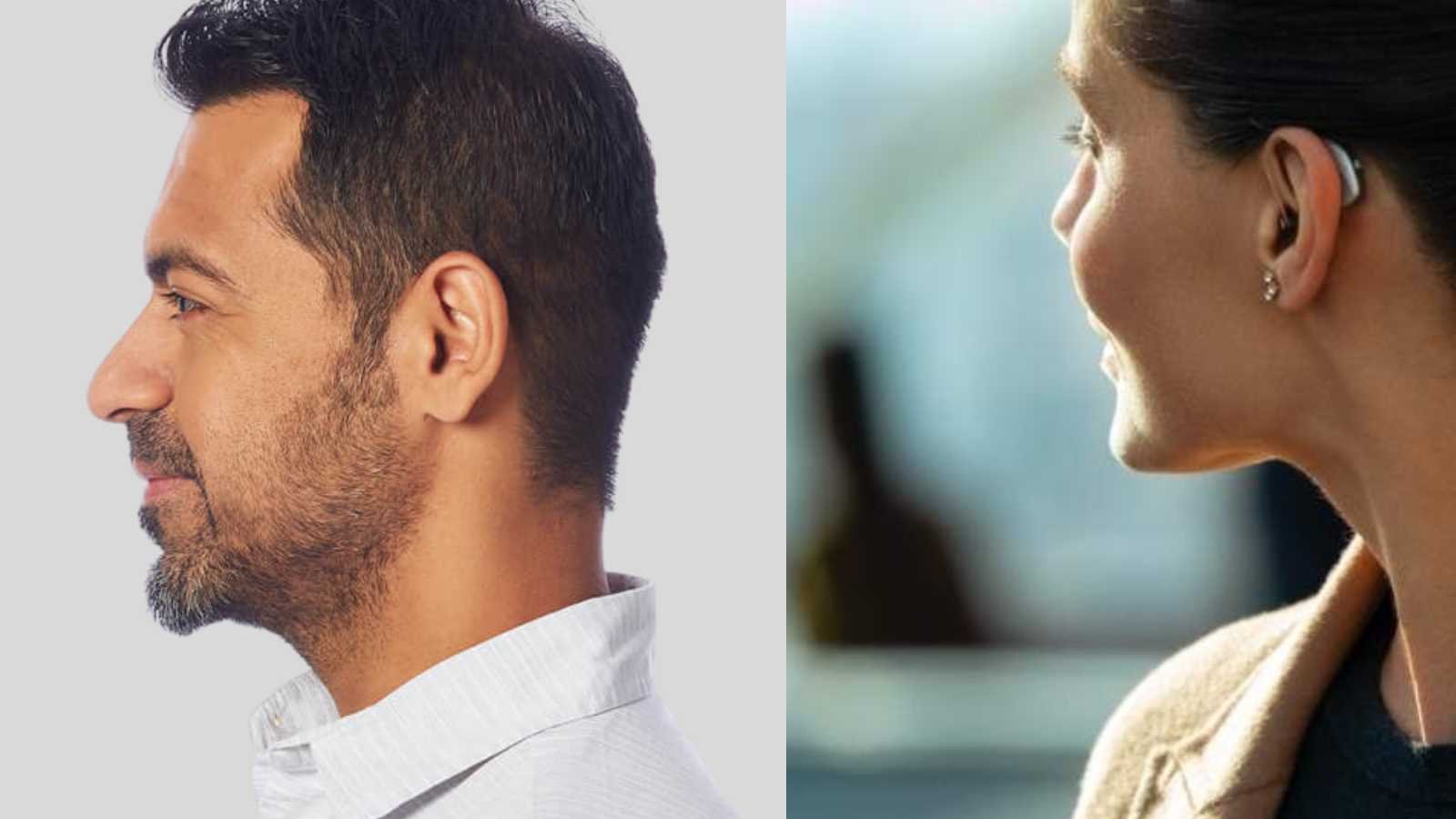
Either hearing aid option can provide a sleek appearance, but the most discreet option is in-the-ear invisible hearing aids.
Final Thoughts
So, which type of hearing aid is right for you? That depends on your individual needs and preferences.
If you're looking for an inconspicuous hearing aid that blends in and rechargeability and Bluetooth are not necessary, ITE hearing aids can be a great option. However, if you're looking for a device with flexible sound quality and the latest high-tech features, BTE is a better option.
No matter which type of hearing aid you choose, we hope this blog post has helped demystify the world of hearing aids so that you can make an informed decision about which type is right for you!



.jpg)


